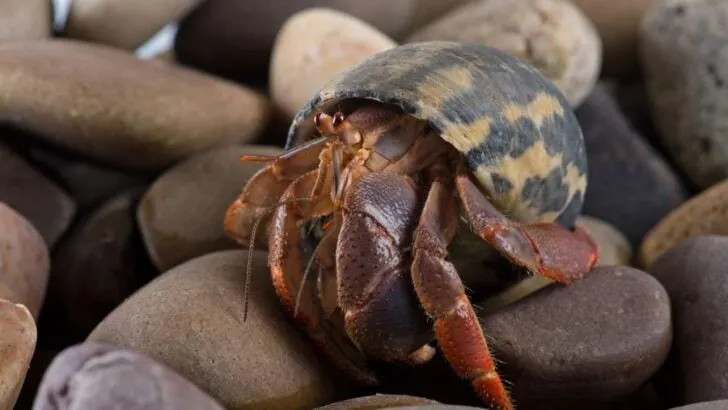“10 Fascinating Facts About Hermit Crabs: Nature’s Shell Swappers”

Hermit crabs are some of the most captivating and misunderstood creatures in the animal kingdom. Found along seashores and in tropical forests, these decapod crustaceans are known for their peculiar habit of living in discarded shells. Despite their name, hermit crabs are not solitary—and they’re not true crabs either! Let’s dive into the world of hermit crabs with these interesting facts that reveal how complex and social these little animals truly are.
1. They Borrow, Not Grow, Their Shells
Hermit crabs don’t have their own hard shells. Instead, they protect their soft, spiral-shaped abdomens by inhabiting empty snail shells. As they grow, they must find bigger shells, and competition for the right fit can be fierce. Some even form “shell exchange chains”, where several crabs line up and trade shells in order of size!
2. They’re Not Actually True Crabs
Though they resemble crabs, hermit crabs aren’t classified as true crabs. Unlike true crabs that have symmetrical hard bodies and shells, hermit crabs have asymmetrical bodies that curve to fit into spiral shells. They belong to the infraorder Anomura, which separates them from their hard-shelled cousins.
3. Hermit Crabs Are Highly Social
Contrary to their name, hermit crabs are social creatures. In the wild, they live in large colonies and interact often. They groom each other, communicate using antennae, and even help each other find food. Pet hermit crabs kept in isolation can become lethargic or depressed—they thrive in groups!
4. They Can Live for Decades
Most people think of hermit crabs as short-lived pets, but in reality, some species can live up to 30 years or more in the wild! The short lifespan in captivity is usually due to improper care—especially a lack of humidity, inappropriate shells, or solitary living.

5. Land and Marine Hermit Crabs Are Different
There are over 800 species of hermit crabs, and they fall into two main types: land-dwelling and marine. Marine hermit crabs live in saltwater and never come to land, while land hermit crabs start life in the sea and then migrate to shore. Land hermits still need access to saltwater and freshwater to stay healthy.
6. Molting is a Delicate, Dangerous Process
Hermit crabs shed their exoskeletons in a process called molting. During this time, they are extremely vulnerable and often bury themselves for weeks or even months to stay safe. After molting, they may eat their old exoskeleton to recycle nutrients like calcium.
7. They Use Their Claws in Clever Ways
Hermit crabs have two claws of different sizes. The larger one is used as a door to block the entrance of their shell from predators, while the smaller claw is used for eating, climbing, and cleaning. This asymmetry is another trait that sets them apart from true crabs.
8. They Have Excellent Senses
Despite their small size, hermit crabs have highly developed senses. Their antennae detect smells and vibrations, and their compound eyes give them a wide field of vision. These traits help them navigate their environment and avoid danger.
9. They Can Be Surprisingly Loud
When stressed or scared, hermit crabs produce chirping sounds by rubbing certain body parts together in a process called stridulation. The sound is often compared to a tiny squeak or croak and is thought to be a warning to other crabs.
10. Hermit Crabs Depend on a Healthy Ecosystem
Hermit crabs rely heavily on clean coastlines and healthy marine environments. They scavenge for food, helping to clean up decomposing matter, and they depend on a steady supply of empty shells, which are often depleted due to human collection or pollution.

Conclusion: Tiny Guardians of the Shoreline
Hermit crabs may be small, but they play an important role in their ecosystems and have a remarkable mix of intelligence, resourcefulness, and social behavior. Whether they’re engaging in a shell swap or burrowing to molt, these crustaceans show us that even the tiniest creatures can have complex lives. With proper care, even pet hermit crabs can be lively, interactive companions for many years.



